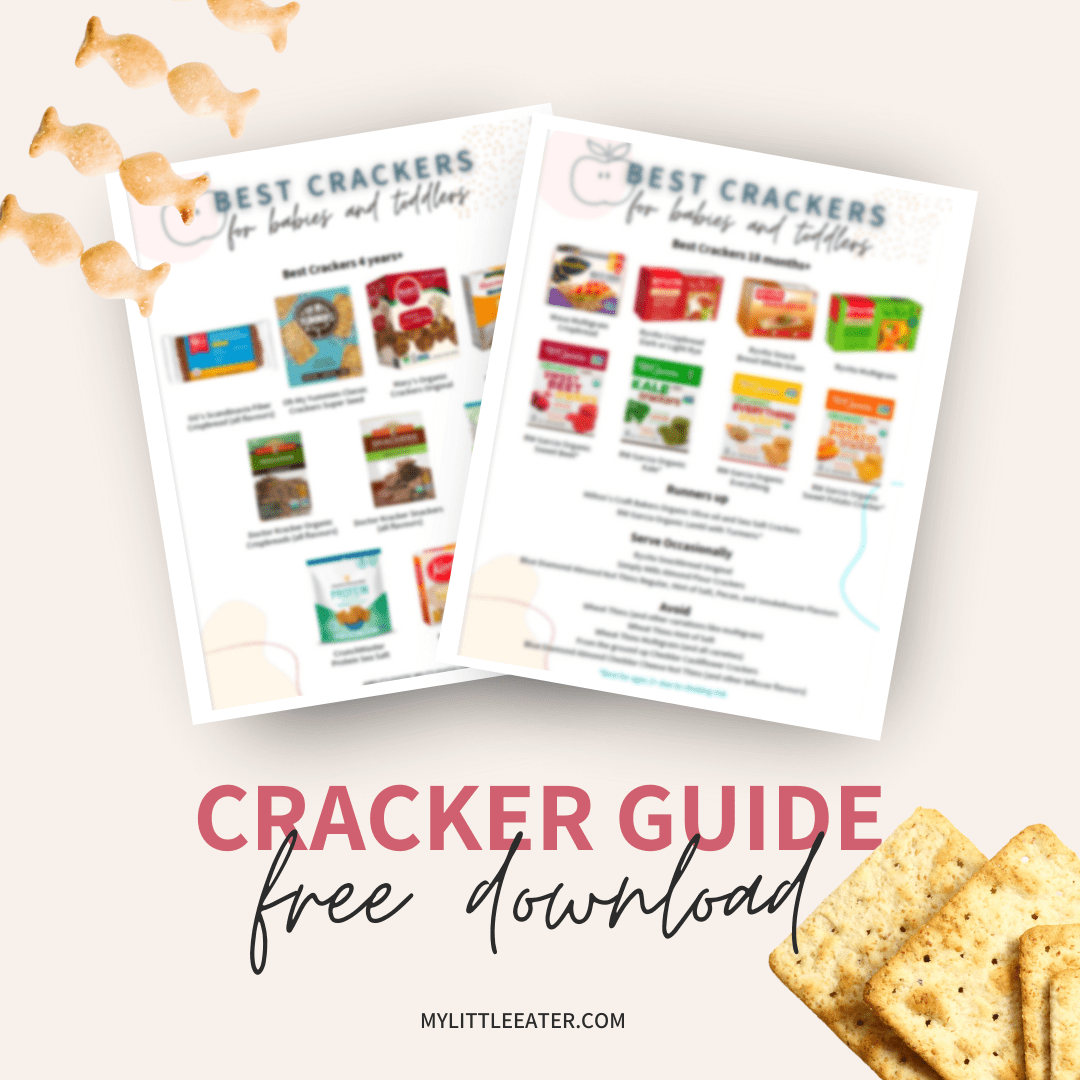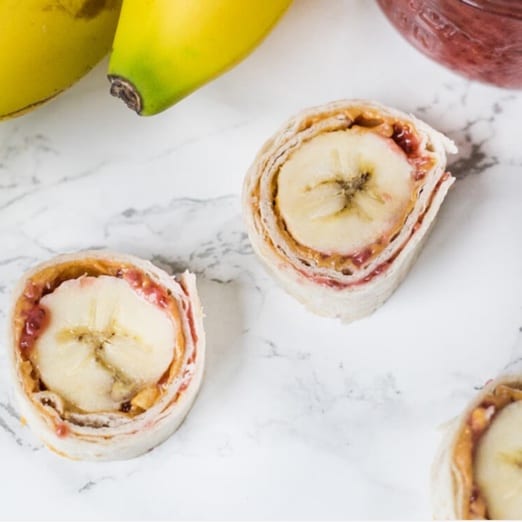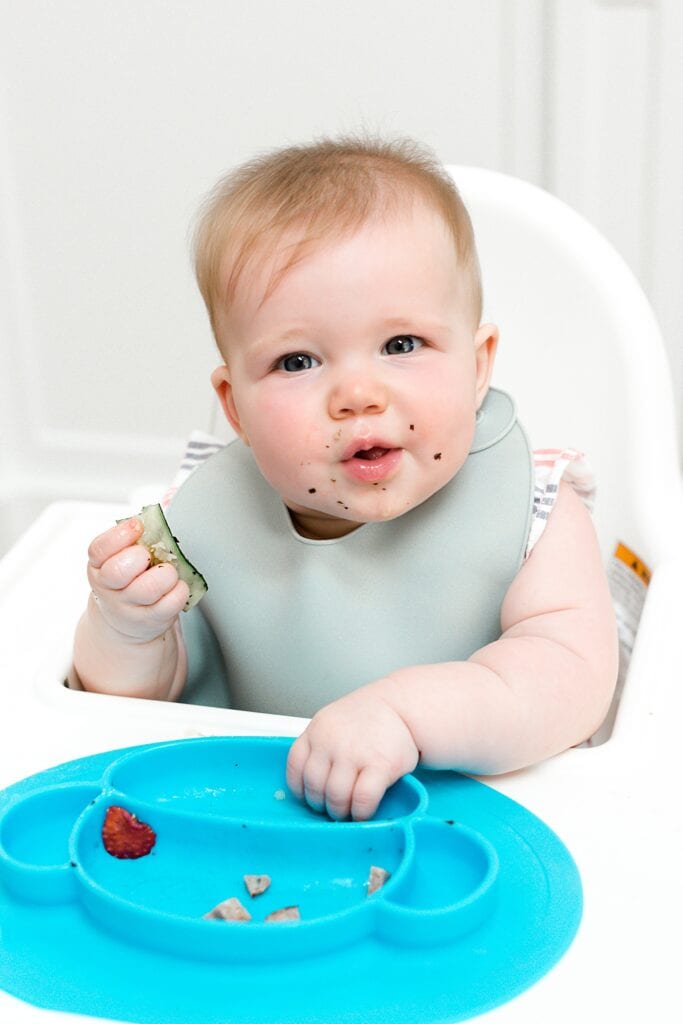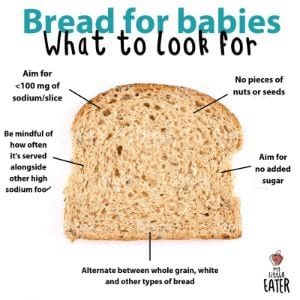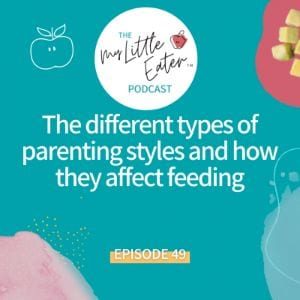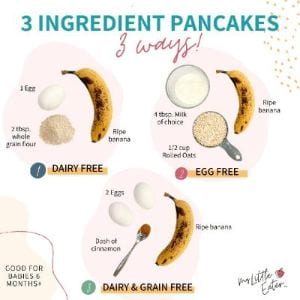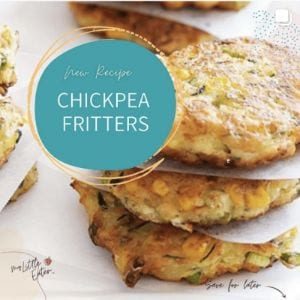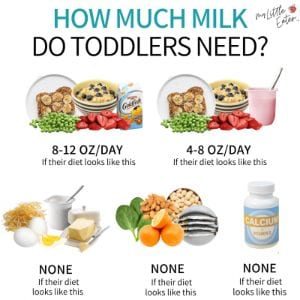Bonus Material: Free Cracker Guide
Crackers can be an excellent food choice for your baby or growing toddler!
They serve as an easy and convenient snack, have diverse flavours, and serve as a great vehicle for other nutrient dense foods like nut/seed butters, hummus, meats, and dips, among others.
But the truth is, not all crackers are created equal! And there seem to be a million companies out there claiming their crackers are healthy. So let’s dive in and find out my top picks for babies and toddlers, and which to avoid or limit.
If you want to skip over the rationale and details over how to choose the best crackers, and want to jump right into my dietitian recommended best and worst crackers for babies and toddlers by age – download this free list here – complete with brand images to make shopping easier!
Are crackers a good food to offer my baby/toddler?
Here’s the thing – crackers are convenient, palatable and loved by 99% of kids out there. But from a nutrition perspective, the vast majority really don’t provide substantial nutrition (except for those listed in my free cracker guide). This is especially for crackers that are safe for babies to eat under 1 year of age.
That’s why, for this age group especially, baby crackers are best to use as a vehicle for nutritious toppings. Meaning, spread on something that may otherwise be hard to eat on it’s own in order to get the nutritional benefits of the spread (not the cracker).
Some of my favourite spreads for babies and toddlers are:
- Hummus
- Tzatziki
- Plain Greek Yogurt
- Mashed beans
- Avocado
- Chicken/duck/pork pate
- Mashed potatoes
- Tahini
- Ghee/Butter
I also want to make a quick note that crackers can often be relied on a little too much by parents (since they’re so easy to throw alongside any meal or snack and we know our kids love them!). So while they really are life savers, I caution parents to notice if they start to rely on them too much. Not only does it prime our kids to fall into a food rut, but it also shapes their taste buds to only like meltable, salty, crispy foods like crackers (over other solid foods we want them to expand to).
Things to look for in crackers for babies and toddler
Minimal Processing
Crackers are of course a processed food, which doesn’t mean you can’t or shouldn’t offer it. However, know that processing (often in the form of grinding, puffing, or flaking) always changes the way a food is metabolized in the body.
For example, whole wheat flour won’t have the same effect as eating whole wheat bread, which doesn’t have the same effect as chewing on a grain of wheat. The rate of breakdown of the nutrients is vastly different in each case which affects blood sugars, hunger levels, etc. in different ways. That being said, you will still find many benefits from crackers when they’re made from high quality ingredients!
Ideally, we aim for baby crackers that aren’t made from refined grains, as they only contain the starchy component of a grain. Because the bran and germ of the grain have been removed (this is what made them a whole grain), refined grains contain minimal natural vitamins and fibre. This means we want to look for the words “whole grain” in the ingredient list.

High quality ingredients
High quality ingredients is a must when looking for healthy cracker options. When it’s made with high quality ingredients, this often means the crackers will be more nutrient dense (high in healthy fat, protein, fibre, iron, calories, etc.) which are all important for growing babies and toddlers.
Many crackers and puffs that are on the market are made of simple, highly processed grains like rice and corn, which lack in nutrient variety and nutrient density. We also know that rice based products, when eaten in abundance, significantly contribute to high arsenic levels in the body, as rice is a crop that absorbs arsenic and heavy metals very well.
This doesn’t mean you should never offer rice based products. It just means being deliberate about rotating these products with other grain products in order to balance out how much your baby/little one gets.
In my free cracker guide, most instances show crackers containing rice as being in the “Runners up” category (if all other nutritional facts look good).
The types of oils and fats used in crackers were taken into consideration, mainly looking for ones that use less processed oils, or non-GMO oils, that were anti-inflammatory.
To add to all of this, the fewer ingredients the better! This leaves less room for things you may want to avoid for your baby/toddler like added sodium, sugar, artificial sweeteners, colorings, and preservatives.
Higher quality ingredients in crackers include:
Whole grain wheat, whole grain rye, oats, quinoa, bulgar or cracked wheat, spelt, millet, brown rice, wild rice, buckwheat, almond flour, coconut flour, chickpea flour, bean flours, flax seeds, sesame seeds, hemp seeds, chia seeds, pumpkin seeds, sunflower seeds, organic cheese/milk, and healthy oils like olive oil, avocado oil, sunflower seed oil, flax seed oil.
The use of root vegetables or cruciferous vegetables such as kale, cauliflower, or broccoli typically aren’t present in significant quantity to make any nutritional difference.
The order that the ingredients are presented also matters. This is because ingredients are listed based on weight in the recipe, so finding high quality ingredients listed in the first couple spots on the ingredient list means it’s present in the most quantity. If sugar or salt, or any other unwanted additives are to be present, at the very least, we want them to be present at the end of the ingredient list.
Protein, fat and fiber
Protein should be a main component of most snacks and all meals, as it’s sustaining, helps balance blood sugars, and can prevent babies & toddlers from getting too hungry before their next snack or meal! It’s also very beneficial for growth and development, and for building and rebuilding tissues like muscles.
Like protein, fiber can help slow down how fast food is digested and keep your little one fuller for longer. When we eat fiber rich foods (like whole grains, vegetables, pulses, etc.), we are usually getting other important nutrients too, like B vitamins. Fiber also helps keep the digestive system healthy and can help with constipation.
The recommendation for toddlers 1-3 years old is 14g/1000kcal or roughly 19g per day. Fiber isn’t as important for babies under 12 months of age, so if compromises were made for fiber in the “Runners Up” category in the cracker list, it’s because we took this fact into consideration.
Fat is extremely healthy for the development of babies’ and toddlers’ growing brain, and provides much needed calories to support their overall growth. However, the type of fat greatly matters. We want to avoid trans-fats and aim for mono and polyunsaturated fats. Saturated fats in the context of a whole foods diet, and from whole food sources, have no evidence of being harmful.
No added sugar/sodium
The aim is to look for baby crackers with the least amount of sodium and added sugar. It’s recommended that added sugar be avoided for all kids under the age of 2, and after that, keeping it to less than 10% of total calories. Sodium is required in the body but when it’s present in excessive amounts, or in more “snacky foods”, this builds up your baby or toddler’s affinity for salty foods and snacks. It’s best to leave as little room for added salt in highly processed snacks as possible, and keep it more for the addition of flavour in home cooked meals.
At the end of the day, these are ideals and we totally understand that accessibility, affordability, and staying sane are also important factors to consider when feeding your kids. Do your best, but know that breaking “the rules” here and there, or in times where survival and sanity are priority, is also what amazing parents do, and what we fully support 🙂
Choking Risk
My free cracker brand guide for best and worst crackers distinguishes between crackers for babies 6-12 months of age, 12-18 months of age, 18 months – 4 years of age and then 4 years and up. This is not only based on whether it contains appropriate ingredients, it’s even more largely based on the texture of the crackers and relative choking hazard for the majority of children.
We want to make sure crackers for young babies and toddlers aren’t too dry or break into rigid, sharp pieces until they have the appropriate chewing skills to manage that texture. If a cracker is dry or difficult for your baby to eat, you can always soak it in water or milk for 30 seconds – 1 minute to soften it up for them so it’s safer.

Regardless of their chewing capabilities, always serve crackers when your child is seated and when you can watch them carefully.
My Little Eater’s criteria for best and worse crackers for babies & toddlers
Ok, ready to get my My Little Eater’s brand recommendations for the best and worst crackers for babies and toddlers? Here’s how crackers are ranked.
All nutritional information for major cracker brands (both from conventional and health food stores) was analyzed and compared based off a 28 g (1 oz) serving size.
Best Crackers
Crackers under this category were determined to be ideal for the age group specified and met all the following MLE nutrition criteria (in addition to the ingredient list ideals outlined in this blog post).
Babies (6-12 months):
- 2 g Protein, 2 g Fiber, 0 Trans or Saturated Fat, 0g added sugar, <100 mg sodium.
Toddlers (12 months+):
- 2 g Protein, 2 g Fiber, 0 Trans or Saturated Fat, <1 g added sugar, <150 mg sodium
Runners Up
Crackers in this category met, or very nearly met, MLE requirements for “Best Cracker” but was either made with a grain/vegetable that is known to contain higher levels of arsenic, contained less fiber than those found in thee “Best” category, or ever so slightly went over the technicalities for salt/sugar. It’s not enough though that we wouldn’t recommend serving them over crackers in next categories.
Serve Occasionally
These crackers are usually the ones most popular among their specified age groups – however they are either higher in salt, are nutritionally lacking, and/or contain ingredients that are best avoided being eaten on a regular basis.
Avoid/limit
These crackers are similar to the category above, but to an even higher degree and so it’s advised to avoid or limit them to special occasions, as there area much better options out there. These crackers are similar to the category above, but to an even higher degree and so it’s advised to avoid or limit them to special occasions, as there area much better options out there.
To get the curated list of best and worst crackers for babies and toddlers by age (as ranked by the categories above) to print out for your quick reference – download the free guide below (complete with brand images to make shopping easier)!

